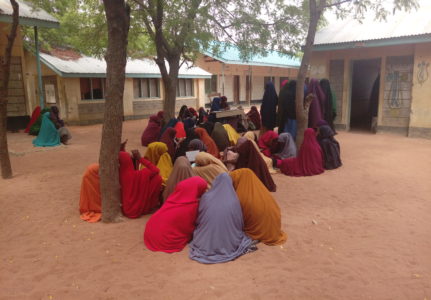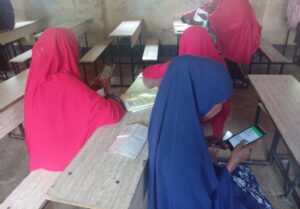The total refugee population in Kenya as of May 2019, was 676,695 according to UNHCR. Almost half of the refugees in Kenya (44%) reside in Dadaab, 40% in Kakuma and 16% in urban areas (mainly Nairobi), alongside 18,500 stateless persons. Last year in from July to December, we had a pilot program with World University Services Of Canada (WUSC), in Daadab refugee camp targeting 500 girls in class 7, 8 and form 1.
The girls came from Tawakal secondary, Elnino primary and Bahati primary schools. These schools are located in Dagahaley refugee camp in Dadaab. WUSC partnered with Windle Trust International, in charge of Secondary schools in Dadaab as well as the Lutheran World Federation (LWF), in charge of primary schools as implementing partners.
WUSC sponsored the 500 girls to use our Shupavu291 service and improve on their academic performance. After the six month pilot, the program was rolled out to an even larger population of beneficiaries in Daadab and Kakuma refugee camps. In March and April 2019, Joan Njogu and Peter Baraka from our partnerships team, went to the refugee camps to train remedial teachers and staff from Windle Trust International on using Shupavu291 for their beneficiaries.
We targeted to register a total of 2500 remedial teachers and learners on Shupavu291. Our team observed that women played a major role in advancing girls’ education. “Most beneficiaries were accompanied by their mothers at the remedial learning centers, where the registration took place,” Joan said.
According to a report by UNESCO (2018)– A lifeline to learning: Leveraging technology to support education for refugees, about 86 percent of the world’s refugees reside in developing countries. 71 percent of refugee households own a mobile phone. While 39 percent of households have internet-enabled phones, the remaining 61 percent cannot benefit from applications developed for smartphones. The vast majority (93 percent) live in places covered by a 2G mobile network.
Through Shupavu291, we provide bite-sized curriculum content on SMS for primary, secondary school learners, as well as teacher refresher courses, to help in effective delivery of learning outcomes. The advantage of using Shupavu291 is the accessibility aspect. Learners can access content from any phone.
Baraka observed that there was a need for awareness to the parents, on the importance of availing their mobile phones to their children for purposes of learning. “Parents need to be sensitized on the need to provide their phones to learners for successful implementation of digital learning programs”, he said.
Since the majority of the beneficiaries are of Somali origin, English is not their first language of instruction in their country of origin, Shupavu291 helps them learn English faster at their own pace. One remedial teacher said they liked Shupavu291 as a supplementary learning aid because it eases their work as educators by introducing learners to concepts that they end up teaching in class.
To learn more on how to partner with us, click here.
About the author:
Juliet Otieno is the Communications Associate at Eneza Education. She has a journalism and Public Relations background and loves good books. You can read more articles written by this author here.



